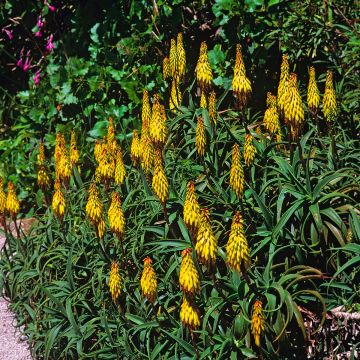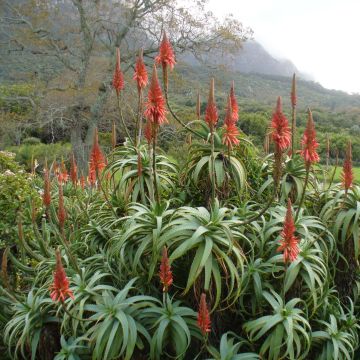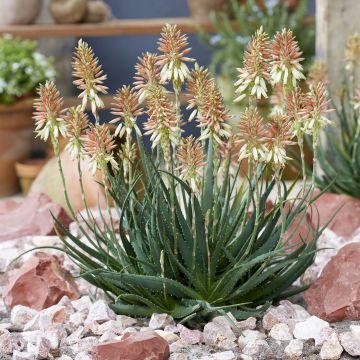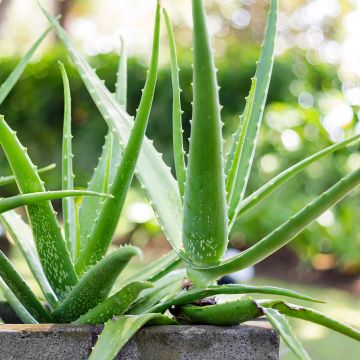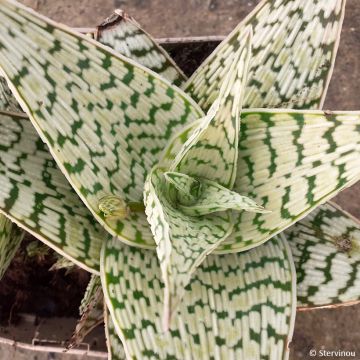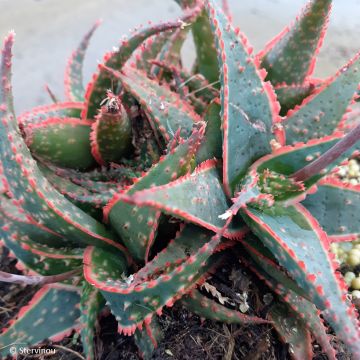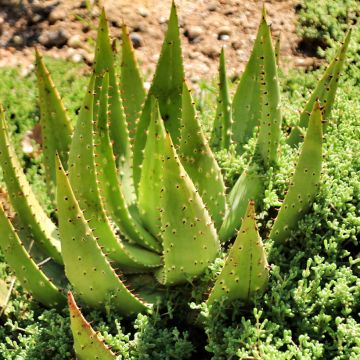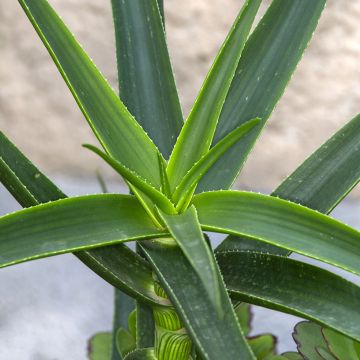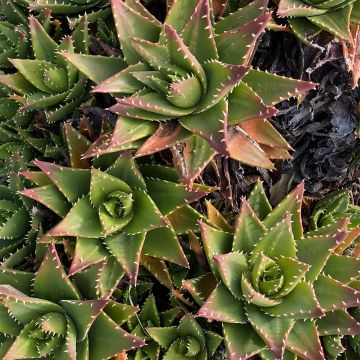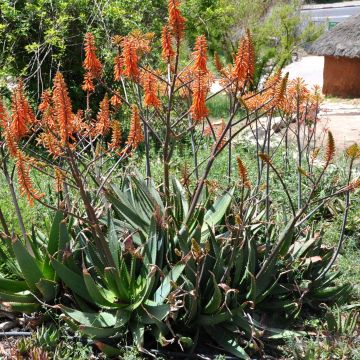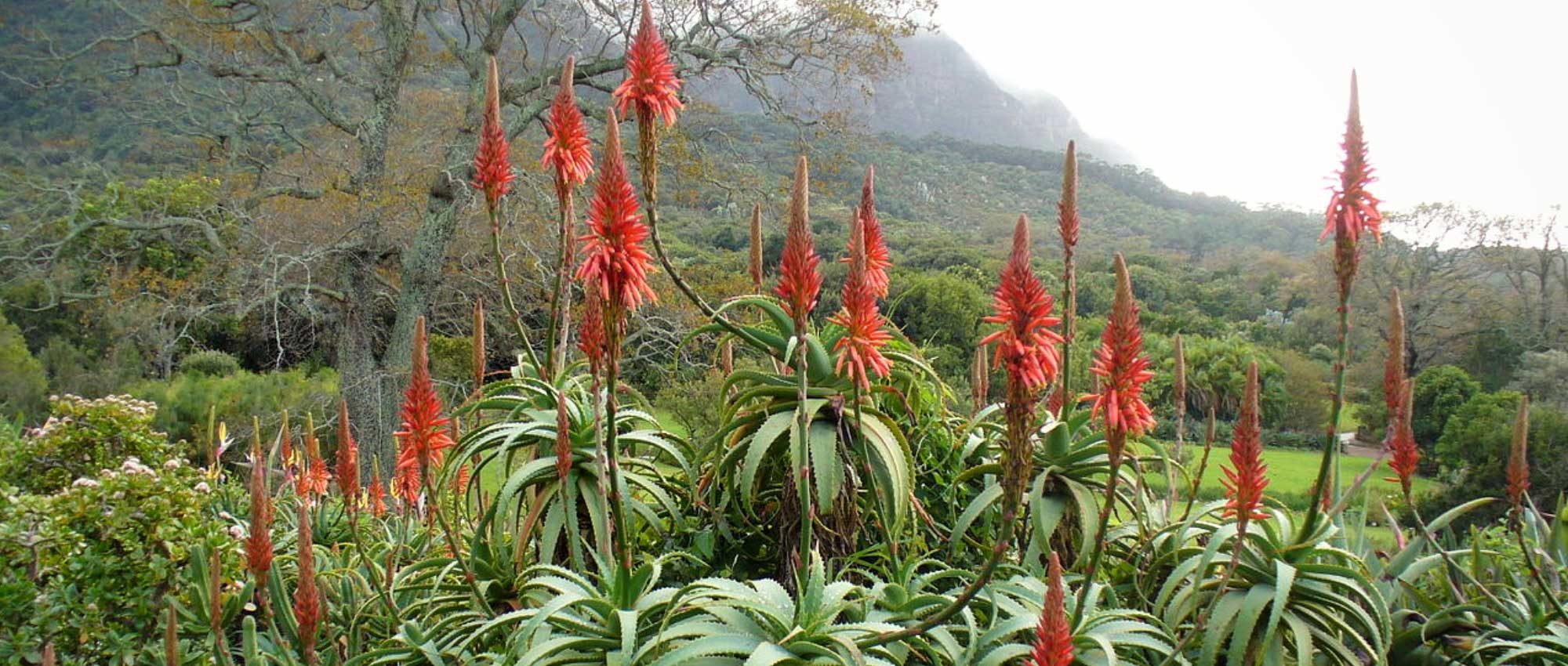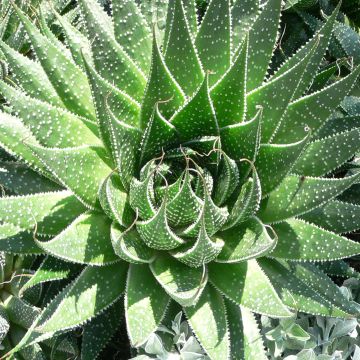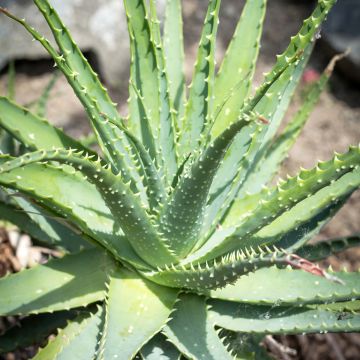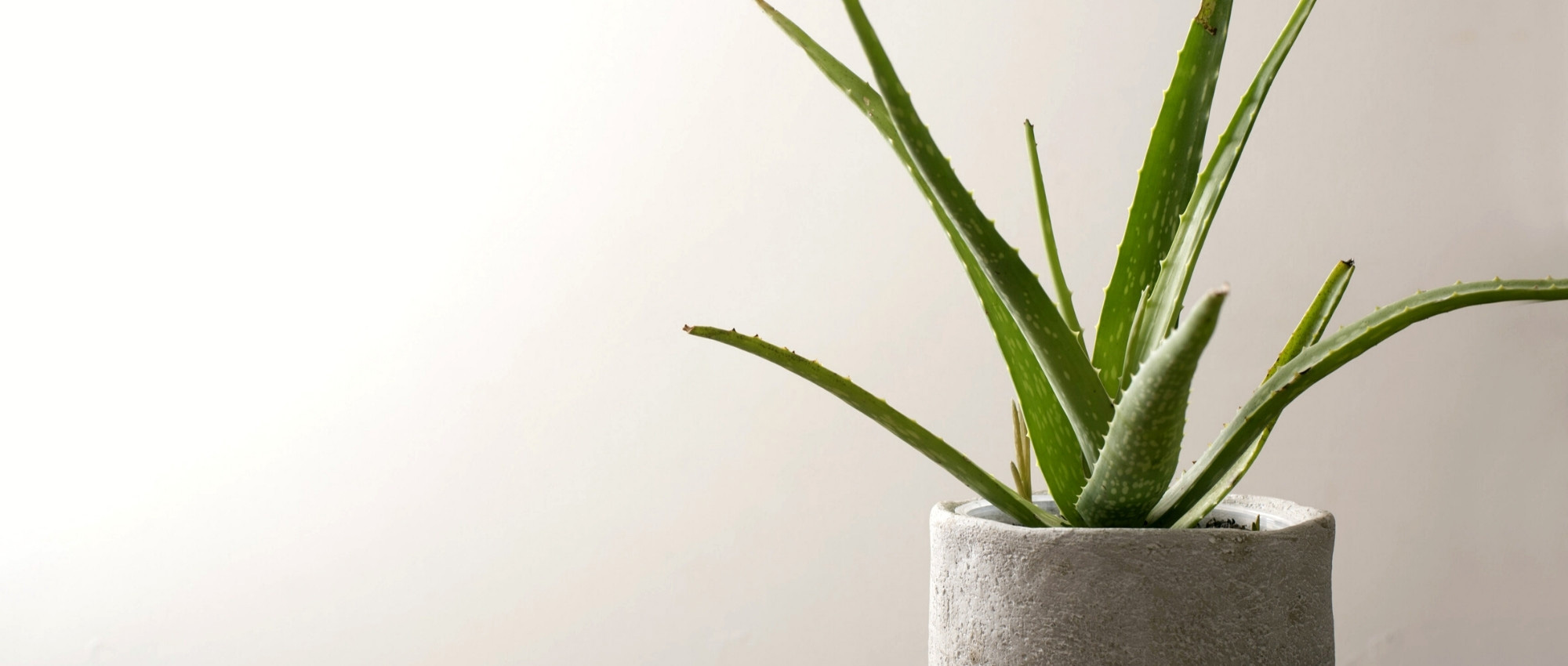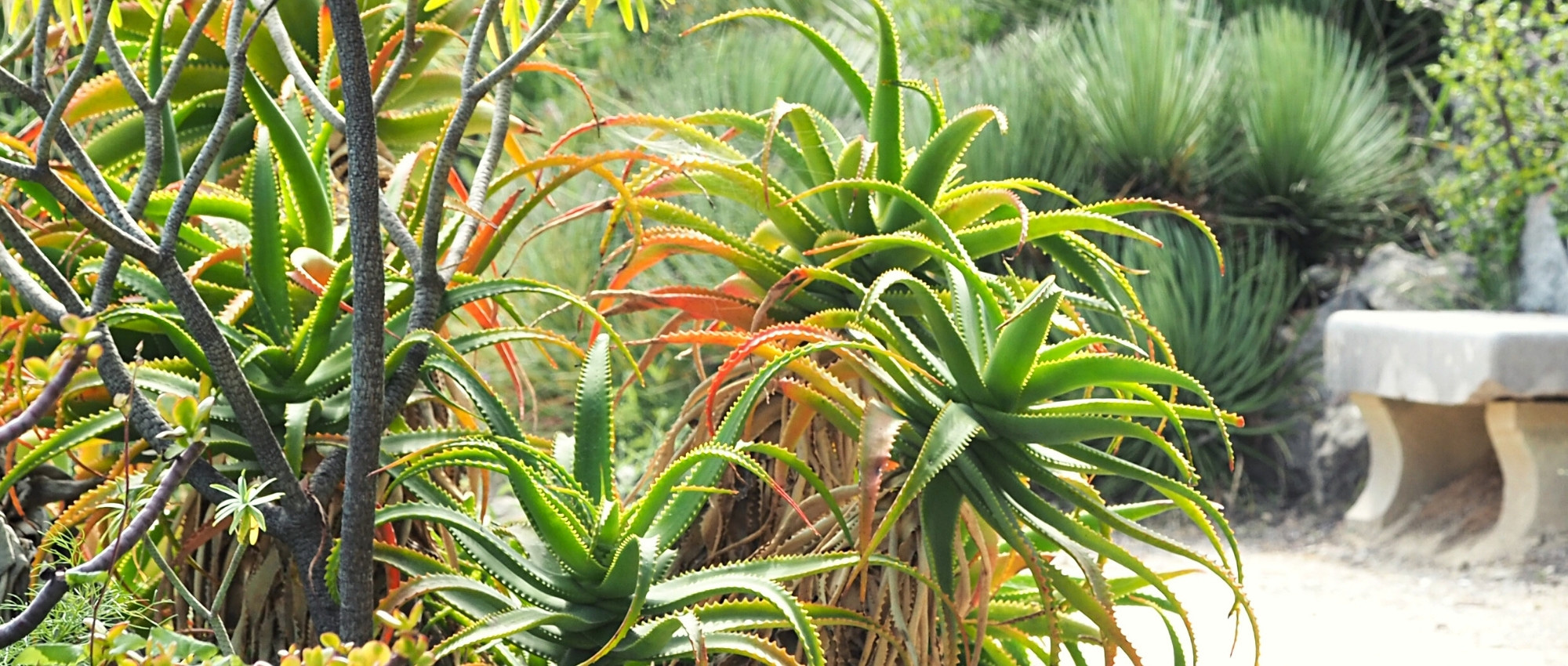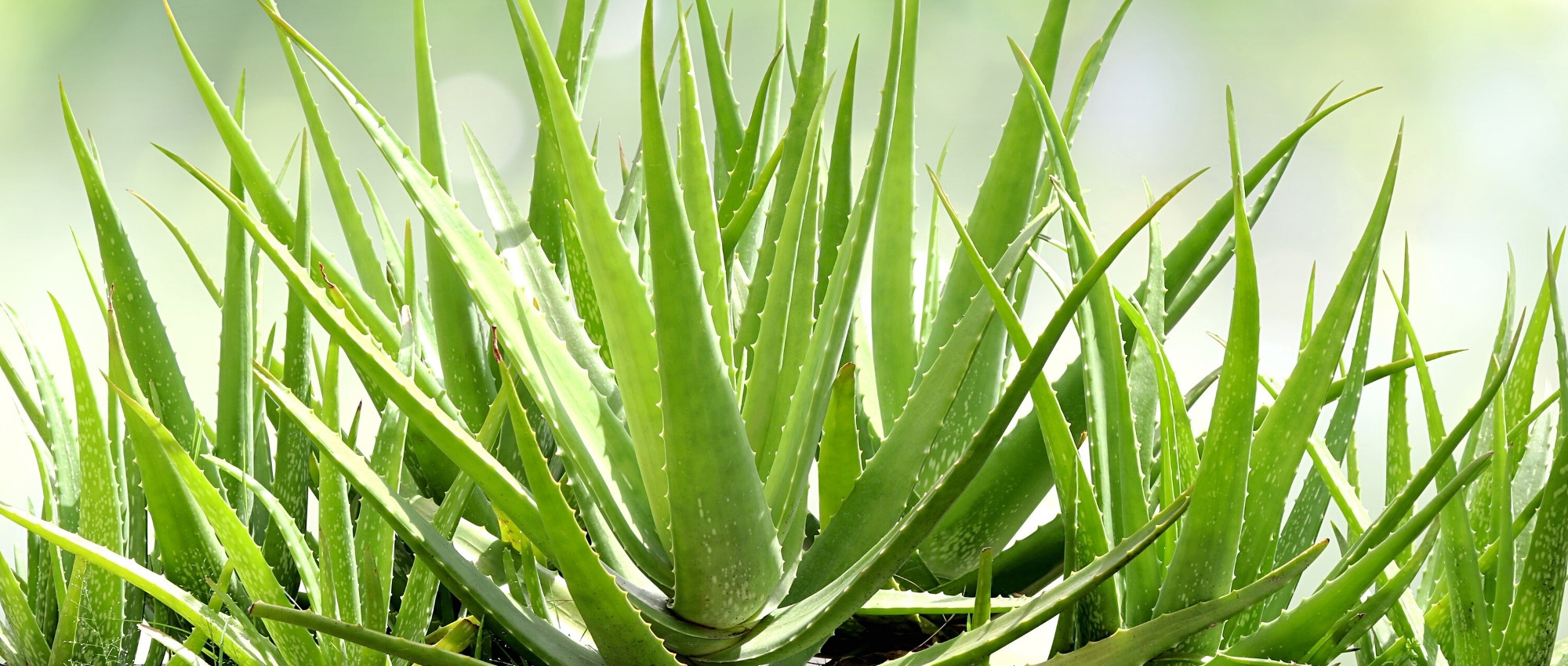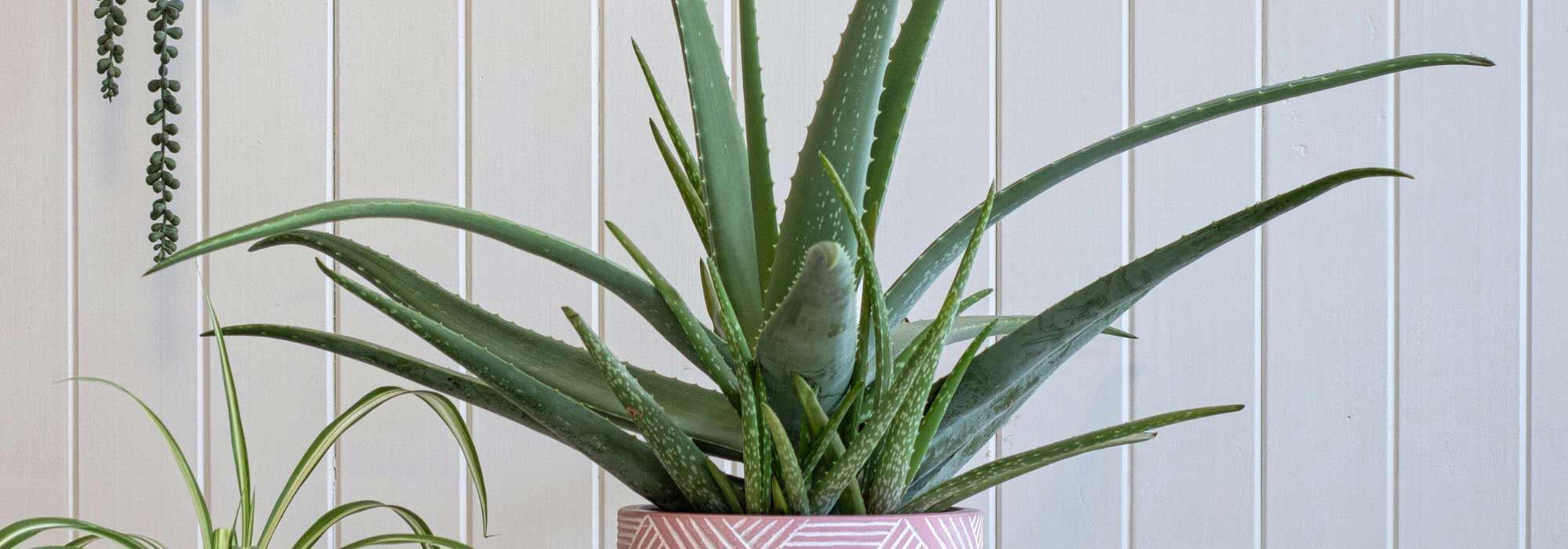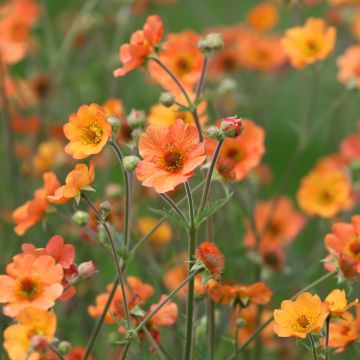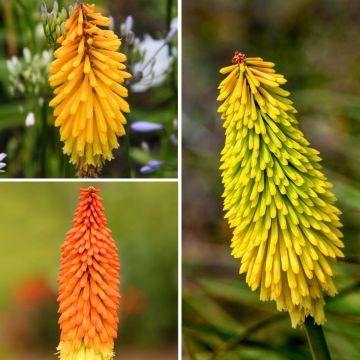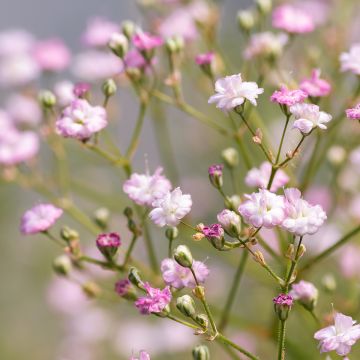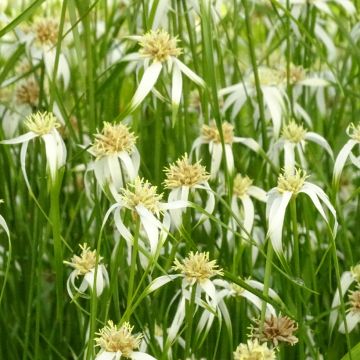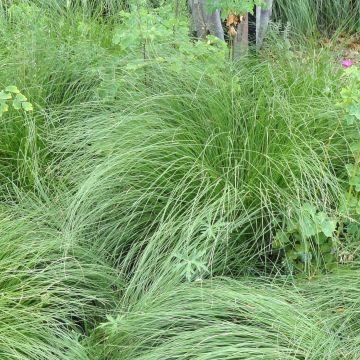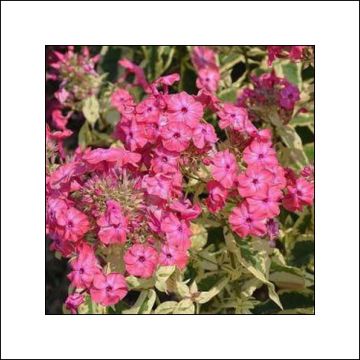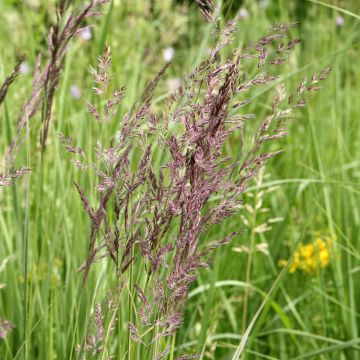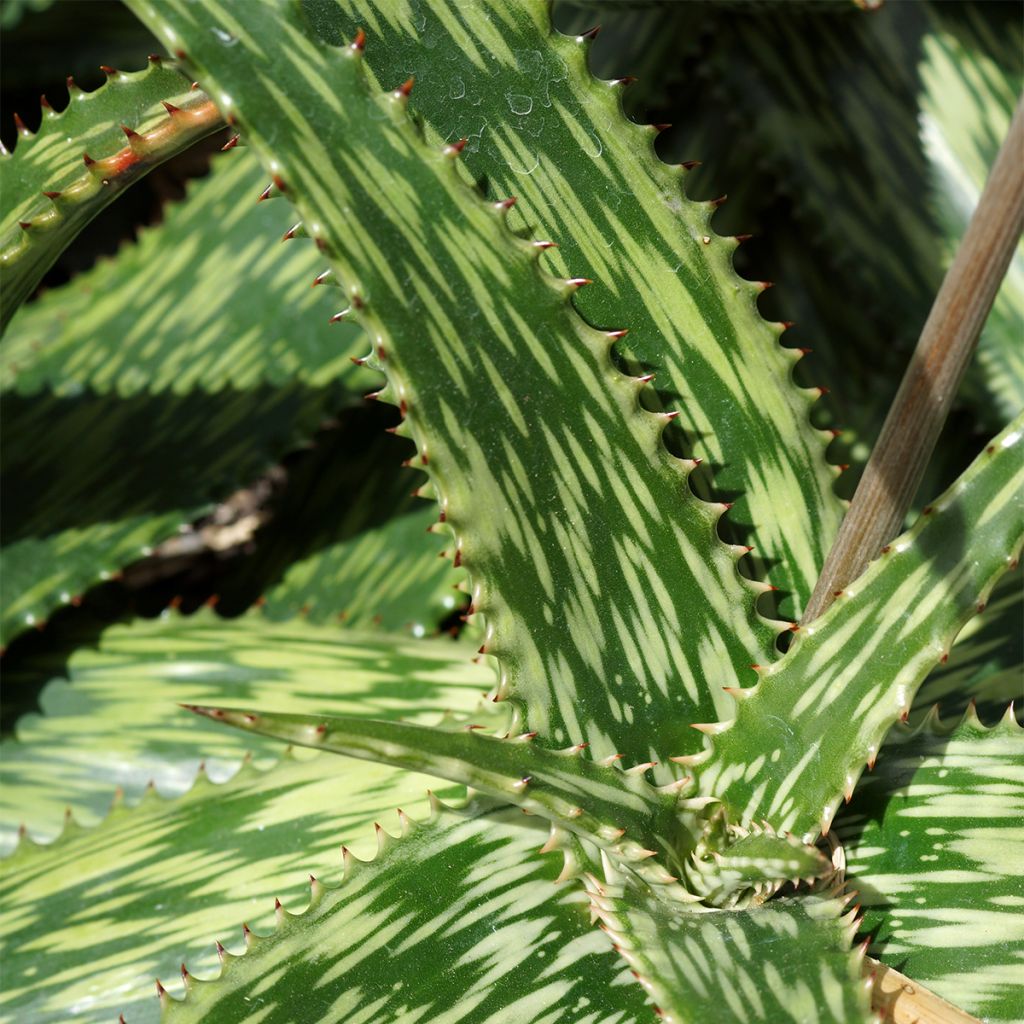

Aloe harlana - Aloès mosaïque
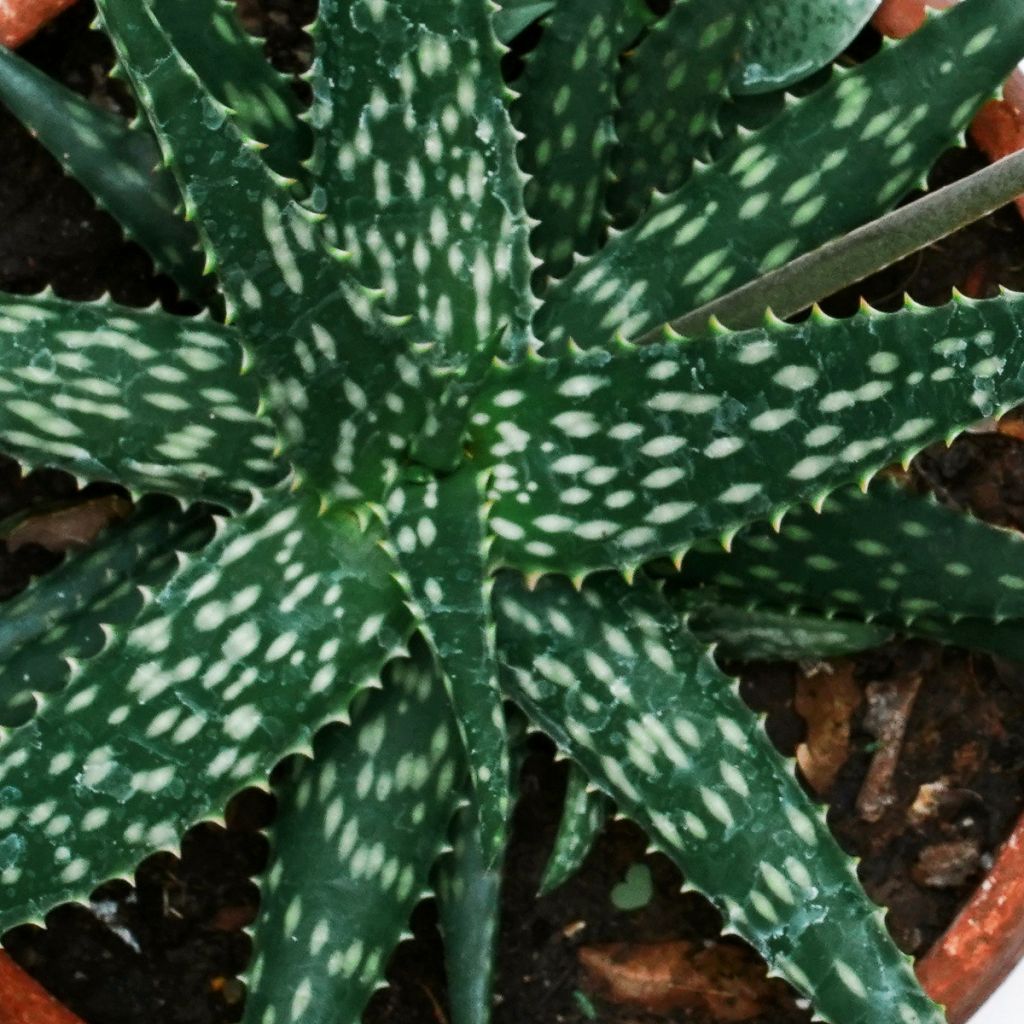

Aloe harlana - Aloès mosaïque
Aloe harlana
Aloe harlana
Special offer!
Receive a €20 voucher for any order over €90 (excluding delivery costs, credit notes, and plastic-free options)!
1- Add your favorite plants to your cart.
2- Once you have reached €90, confirm your order (you can even choose the delivery date!).
3- As soon as your order is shipped, you will receive an email containing your voucher code, valid for 3 months (90 days).
Your voucher is unique and can only be used once, for any order with a minimum value of €20, excluding delivery costs.
Can be combined with other current offers, non-divisible and non-refundable.
Why not try an alternative variety in stock?
View all →This plant carries a 12 months recovery warranty
More information
We guarantee the quality of our plants for a full growing cycle, and will replace at our expense any plant that fails to recover under normal climatic and planting conditions.
Does this plant fit my garden?
Set up your Plantfit profile →
Description
Aloe harlana is a tall aloe, composed of long fleshy olive green leaves streaked with light green, gathered in a large rosette. Its growth is adorned with an original and attractive spring flowering, which takes the form of tall and branched inflorescences bearing red and orange tubular flowers. With a very exotic appearance, this spectacular plant from the high slopes of the Ethiopian Great Rift Valley is not very resistant to heavy frost, but it proves to be particularly resistant to summer drought. It is best grown in open ground only in mild coastal regions, on a steep and rocky terrain in full sun. It grows very well in a large pot on the terrace, to be stored over winter in colder climates.
Aloe harlana belongs to the Asphodelaceae family. This botanical species was discovered near the village of Harla in the southern part of the Great Rift Valley in Ethiopia and described in 1957 by Gilbert Westacott Reynolds. It can be found on grassy slopes between 1500 and 1800 metres (4900 to 5900 feet) above sea level. It is a large species, almost devoid of stems, with succulent and evergreen foliage. An adult plant will reach approximately 1.50 m (5 ft) in height when in flower, with a spread of 1 m (3 ft) in good growing conditions. It generally forms solitary rosettes, but sometimes produces small colonies of individual rosettes. The foliage consists of rigid lance-shaped leaves measuring about 50 cm (20 in) long and 13 cm (5 in) wide, slightly concave, tapering to a point, with brown teeth along the edges. The lamina is uniformly semi-glossy, dark olive green with light green longitudinal stripes and dots. The flowers appear in spring or early summer depending on the climate, on a floral stem 1.50 m (5 ft) tall, divided into 3 to 7 branches. Each branch carries a conical inflorescence. The elongated buds are dark reddish-purple; they open into pale orange tubular flowers, from the bottom of the spike to the top, so that the red buds are adjacent to orange flowers. Both flowers and buds have a glossy texture.
A plant that thrives in arid lands and is highly resistant to salt spray, the Aloe harlana can be grown in a large pot to decorate the terrace or balcony, or in the ground in a coastal garden, as it is hardy to about -5°C. It makes a magnificent specimen in well-drained steep or rocky terrain, in a raised bed, and of course in a rockery or on a dry slope. Elsewhere it can be planted in a large pot that is wider than it is tall, to showcase its strong personality on a contemporary or exotic terrace. It can be paired, for example, with agaves, opuntias, Delosperma, or shrubby euphorbias (Euphorbia mellifera).
About Agaves and Aloes:
Aloes and agaves resemble each other, but belong to two different botanical families. The main difference lies in the fact that aloe rosettes flower for many years, while the flowering of a mature agave rosette marks the end of its life. In some aloe species, interfoliar buds give rise to new plants that cover the dried remains of the mother plant. In agaves, the central floral scape develops from the terminal bud. In aloes, the floral buds emerge between the leaves. Agaves are native to North America, while aloes are found only in the southern half of Africa and in nearby islands in the Indian Ocean.
Aloe harlana in pictures
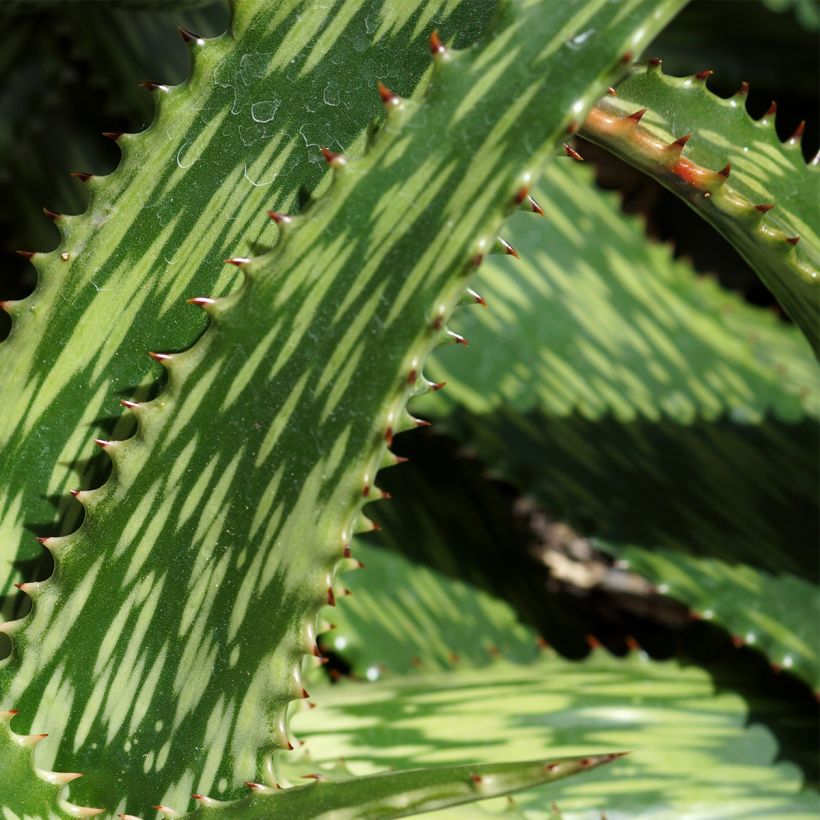

Flowering
Foliage
Plant habit
Botanical data
Aloe
harlana
Asphodelaceae
East Africa
Other Aloe
View all →Planting and care
Like all "succulent" plants, Aloe hartana generally prefer full sun and a well-drained, even arid soil. It appreciates very rocky, gravelly or sandy soils, even poor ones, and does not fear the presence of limestone. The hardiness of this plant depends a lot on the soil drainage, which should not retain moisture in winter. Easy to grow in a dry and sunny rock garden, a gravel-enriched bed, or in large pots, this aloe can tolerate -4 to -5°C (24.8 - 23 °F) overnight without apparent damage. Its resistance to summer drought is excellent.
Pot cultivation: choose a pot wider than it is tall, with drainage holes, of 30 to 40 litres capacity. Place a layer of clay pellets or pottery shards at the bottom of the pot. Use a specialist cactus-growing medium. Water regularly from March to September, allowing the substrate to dry between waterings. Apply cactus fertiliser from spring to summer. Reduce waterings in winter. Overwinter your aloe in a very bright, minimally heated room.
Planting period
Intended location
Care
Planting & care advice
This item has not been reviewed yet - be the first to leave a review about it.
Similar products
Haven't found what you were looking for?
Hardiness is the lowest winter temperature a plant can endure without suffering serious damage or even dying. However, hardiness is affected by location (a sheltered area, such as a patio), protection (winter cover) and soil type (hardiness is improved by well-drained soil).

Photo Sharing Terms & Conditions
In order to encourage gardeners to interact and share their experiences, Promesse de fleurs offers various media enabling content to be uploaded onto its Site - in particular via the ‘Photo sharing’ module.
The User agrees to refrain from:
- Posting any content that is illegal, prejudicial, insulting, racist, inciteful to hatred, revisionist, contrary to public decency, that infringes on privacy or on the privacy rights of third parties, in particular the publicity rights of persons and goods, intellectual property rights, or the right to privacy.
- Submitting content on behalf of a third party;
- Impersonate the identity of a third party and/or publish any personal information about a third party;
In general, the User undertakes to refrain from any unethical behaviour.
All Content (in particular text, comments, files, images, photos, videos, creative works, etc.), which may be subject to property or intellectual property rights, image or other private rights, shall remain the property of the User, subject to the limited rights granted by the terms of the licence granted by Promesse de fleurs as stated below. Users are at liberty to publish or not to publish such Content on the Site, notably via the ‘Photo Sharing’ facility, and accept that this Content shall be made public and freely accessible, notably on the Internet.
Users further acknowledge, undertake to have ,and guarantee that they hold all necessary rights and permissions to publish such material on the Site, in particular with regard to the legislation in force pertaining to any privacy, property, intellectual property, image, or contractual rights, or rights of any other nature. By publishing such Content on the Site, Users acknowledge accepting full liability as publishers of the Content within the meaning of the law, and grant Promesse de fleurs, free of charge, an inclusive, worldwide licence for the said Content for the entire duration of its publication, including all reproduction, representation, up/downloading, displaying, performing, transmission, and storage rights.
Users also grant permission for their name to be linked to the Content and accept that this link may not always be made available.
By engaging in posting material, Users consent to their Content becoming automatically accessible on the Internet, in particular on other sites and/or blogs and/or web pages of the Promesse de fleurs site, including in particular social pages and the Promesse de fleurs catalogue.
Users may secure the removal of entrusted content free of charge by issuing a simple request via our contact form.
The flowering period indicated on our website applies to countries and regions located in USDA zone 8 (France, the United Kingdom, Ireland, the Netherlands, etc.)
It will vary according to where you live:
- In zones 9 to 10 (Italy, Spain, Greece, etc.), flowering will occur about 2 to 4 weeks earlier.
- In zones 6 to 7 (Germany, Poland, Slovenia, and lower mountainous regions), flowering will be delayed by 2 to 3 weeks.
- In zone 5 (Central Europe, Scandinavia), blooming will be delayed by 3 to 5 weeks.
In temperate climates, pruning of spring-flowering shrubs (forsythia, spireas, etc.) should be done just after flowering.
Pruning of summer-flowering shrubs (Indian Lilac, Perovskia, etc.) can be done in winter or spring.
In cold regions as well as with frost-sensitive plants, avoid pruning too early when severe frosts may still occur.
The planting period indicated on our website applies to countries and regions located in USDA zone 8 (France, United Kingdom, Ireland, Netherlands).
It will vary according to where you live:
- In Mediterranean zones (Marseille, Madrid, Milan, etc.), autumn and winter are the best planting periods.
- In continental zones (Strasbourg, Munich, Vienna, etc.), delay planting by 2 to 3 weeks in spring and bring it forward by 2 to 4 weeks in autumn.
- In mountainous regions (the Alps, Pyrenees, Carpathians, etc.), it is best to plant in late spring (May-June) or late summer (August-September).
The harvesting period indicated on our website applies to countries and regions in USDA zone 8 (France, England, Ireland, the Netherlands).
In colder areas (Scandinavia, Poland, Austria...) fruit and vegetable harvests are likely to be delayed by 3-4 weeks.
In warmer areas (Italy, Spain, Greece, etc.), harvesting will probably take place earlier, depending on weather conditions.
The sowing periods indicated on our website apply to countries and regions within USDA Zone 8 (France, UK, Ireland, Netherlands).
In colder areas (Scandinavia, Poland, Austria...), delay any outdoor sowing by 3-4 weeks, or sow under glass.
In warmer climes (Italy, Spain, Greece, etc.), bring outdoor sowing forward by a few weeks.






























